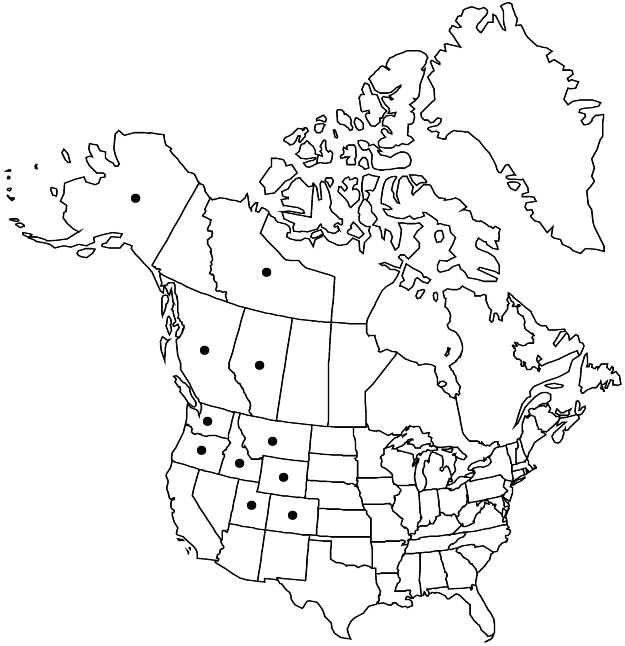Dryas hookeriana
Izv. Glavn. Bot. Sada S.S.S.R. 28: 325. 1929.
Plants 1.5–9 cm. Leaf blades usually oblong-elliptic to lanceolate, sometimes ovate, 4–16(–25) × 1–6(–10) mm, base usually truncate or cordate, sometimes cuneate, margins strongly revolute to flat, coarsely dentate or serrate, sinuses 5–25(–30)% to midvein, apex acute to obtuse, surfaces smooth to slightly plicate, only midvein ± obscured adaxially within medial fold, abaxial tomentose to woolly (obscuring lateral veins), adaxial usually glabrous, sometimes sparsely hairy proximally on midvein, feathery hairs usually absent, rarely 1+ on midveins abaxially, midveins and petioles abaxially stipitate-glandular. Peduncles 10–30 mm. Flowers erect at flowering; sepals lanceolate to narrowly elliptic, 4–10 × 0.6–1.5 mm; petals 8, spreading, usually white or cream, sometimes yellow, 9–14 × 5–11 mm; filaments glabrous. Achenes 2.5–3 mm; styles 11–25 mm. 2n = 18.
Phenology: Flowering Jun–Aug.
Habitat: Alpine meadows, dry rocky slopes and ridges, alpine tundra
Elevation: 1500–3900 m
Distribution

Alta., B.C., N.W.T., Alaska, Colo., Idaho, Mont., Oreg., Utah, Wash., Wyo.
Discussion
In some states and provinces, the distribution of Dryas hookeriana is restricted to northwestern and central Colorado, southeastern and northernmost Idaho, western and central Montana, northeastern Utah (Uinta and Wasatch mountains), eastern Oregon and Washington, southwestern and central Wyoming, and western Northwest Territories.
Selected References
None.